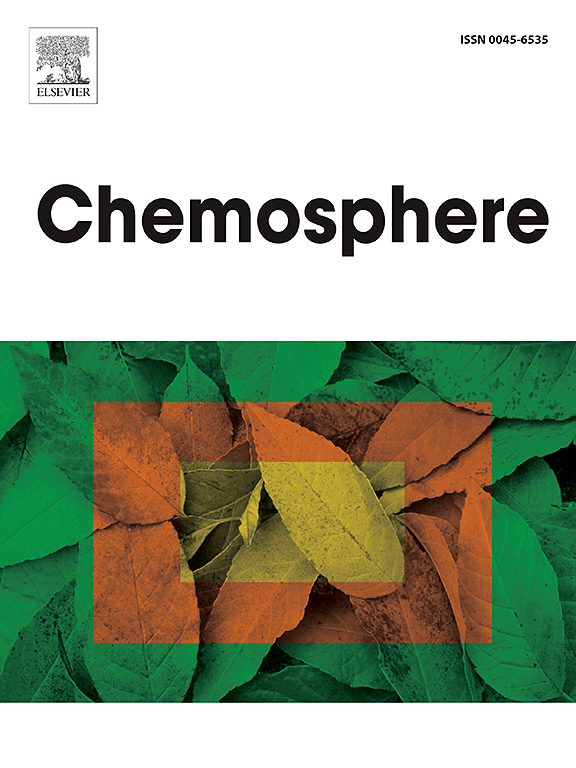一种新型微塑料降解菌株的分离:一种有前途的低密度聚乙烯修复剂
IF 8.1
2区 环境科学与生态学
Q1 ENVIRONMENTAL SCIENCES
引用次数: 0
摘要
本研究研究了两种细菌菌株,红红红球菌和硝基瓜jacolicus Paenarthrobacter nitroguajacolicus的生物降解能力,确定了P. nitroguajacolicus是降解低密度聚乙烯(LDPE)的新候选菌株,LDPE是塑料污染的主要来源。这两种菌株都是从塑料污染的环境中分离出来的,并在以LDPE为唯一碳源的实验室条件下培养。活细胞计数测量显示,P. nitroguajacolicus细菌计数峰值约为2 × 106 CFU/mL,在45天的孵育期内观察到间歇性增加。相比之下,红褐毛霉表现出更稳定的趋势,峰值计数为5 × 105 CFU/mL。这些结果表明,硝基瓜黄霉在LDPE上具有优越的生长潜力。三磷酸腺苷(ATP)测定结果表明,其代谢活性显著,其中氮瓜柳碱(P. nitroguajacolicus)的RLU值为135,高于红杉(R. erythropolis)的96。这支持了Pn在代谢降解LDPE方面更活跃的说法。此外,利用扫描电镜(SEM)、核磁共振(NMR)和傅里叶变换红外(FTIR)光谱分析证实了LDPE的结构和化学变化。红杉对LDPE的表面降解更明显,而氮瓜jacolicus则表现出更高的代谢活性,强调了它们在生物降解中的互补作用。该研究强调了这些细菌在减轻塑料污染的可持续生物修复策略中的潜力,其中P. nitroguajacolicus因其对LDPE的降解能力而成为一种新颖且特别有前途的候选者。本文章由计算机程序翻译,如有差异,请以英文原文为准。

Isolation of a novel microplastic-degrading bacterial strain: a promising agent for low-density polyethylene remediation
This study investigates the biodegradation capabilities of two bacterial strains, Rhodococcus erythropolis and Paenarthrobacter nitroguajacolicus, identifying P. nitroguajacolicus as a novel candidate for its ability to degrade low-density polyethylene (LDPE), a major contributor to plastic pollution. Both strains were isolated from plastic-contaminated environments and cultivated in laboratory conditions with LDPE as the sole carbon source.
Viable cell count measurements revealed that P. nitroguajacolicus achieved a peak bacterial count of approximately 2 × 106 CFU/mL, with intermittent increases observed over the 45-day incubation period. In comparison, R. erythropolis exhibited a more stable trend, with a peak count of 5 × 105 CFU/mL. These findings highlight the superior growth potential of P. nitroguajacolicus on LDPE.
ATP measurements indicated significant metabolic activity, with P. nitroguajacolicus showing higher vitality with an RLU value of 135 compared to R. erythropolis, which recorded an RLU of 96. This supports the assertion that Pn is metabolically more active in degrading LDPE. Additionally, structural and chemical changes in LDPE were confirmed using Scanning Electron Microscopy (SEM), Nuclear Magnetic Resonance (NMR), and Fourier-transform infrared (FTIR) spectroscopy. R. erythropolis demonstrated more pronounced surface degradation of LDPE, while P. nitroguajacolicus exhibited higher metabolic activity, emphasizing their complementary roles in biodegradation.
This study highlights the potential of these bacteria in sustainable bioremediation strategies for mitigating plastic pollution, with P. nitroguajacolicus emerging as a novel and particularly promising candidate due to its degradative capacity for LDPE.
求助全文
通过发布文献求助,成功后即可免费获取论文全文。
去求助
来源期刊

Chemosphere
环境科学-环境科学
CiteScore
15.80
自引率
8.00%
发文量
4975
审稿时长
3.4 months
期刊介绍:
Chemosphere, being an international multidisciplinary journal, is dedicated to publishing original communications and review articles on chemicals in the environment. The scope covers a wide range of topics, including the identification, quantification, behavior, fate, toxicology, treatment, and remediation of chemicals in the bio-, hydro-, litho-, and atmosphere, ensuring the broad dissemination of research in this field.
 求助内容:
求助内容: 应助结果提醒方式:
应助结果提醒方式:


